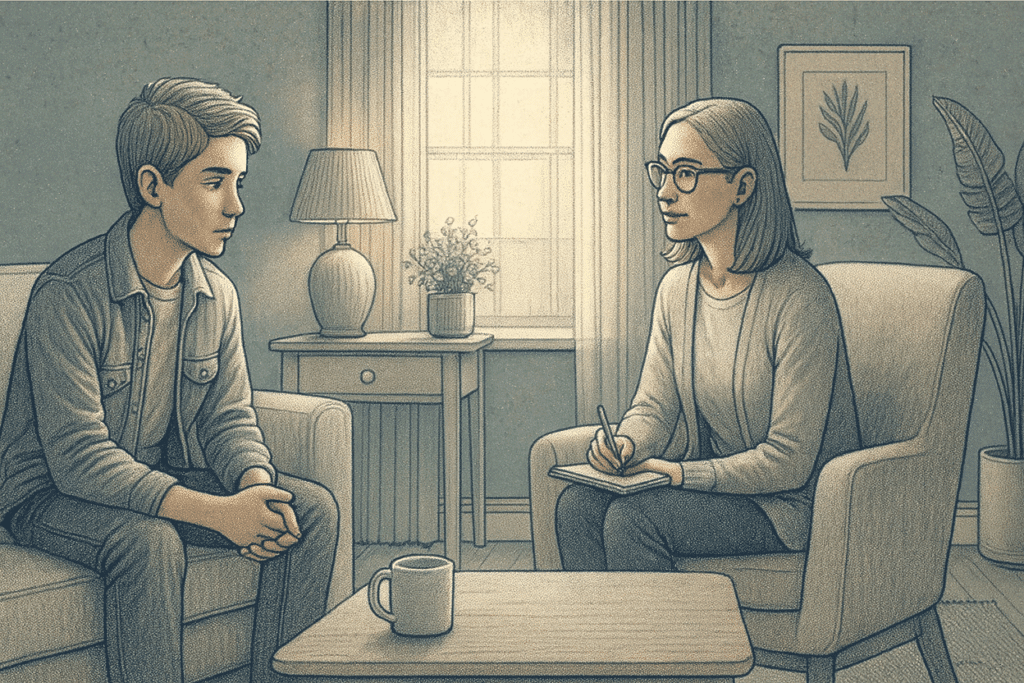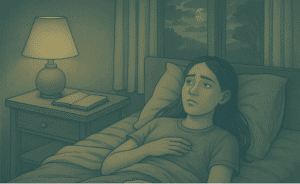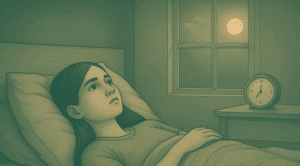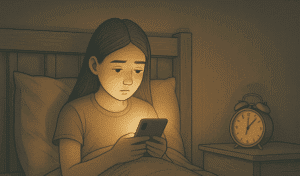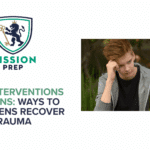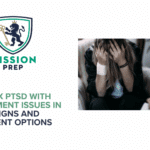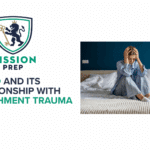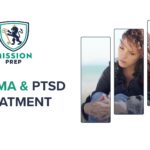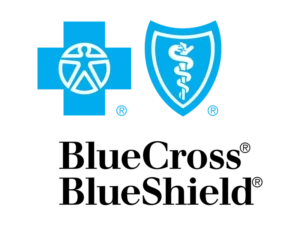Key Takeaways
- Trauma-Focused Cognitive Behavioral Therapy (TF-CBT) is the gold standard for teen PTSD treatment, helping adolescents process trauma while building healthy coping skills in a structured, evidence-based approach.
- EMDR (Eye Movement Desensitization and Reprocessing) offers teens a way to process traumatic memories safely without having to verbally relive every detail, making it especially effective for those who struggle with talk therapy.
- Family therapy plays a crucial role in teen PTSD recovery, as trauma affects entire family systems and healing happens faster when loved ones understand triggers, responses, and how to provide appropriate support.
- Creative therapies like art, music, and movement provide alternative ways for teens to express and process trauma when traditional talk therapy feels overwhelming or insufficient.
- Mission Prep Healthcare offers comprehensive adolescent PTSD treatment through residential, outpatient, and telehealth programs that combine evidence-based therapies with family-centered care for lasting recovery.
Understanding PTSD in Teenagers
Post-Traumatic Stress Disorder affects an estimated 5–8% of teens, though the real number is likely higher since many don’t recognize the signs or feel ready to talk about them. Because they’re still growing emotionally and mentally, trauma can disrupt important milestones and change how they see themselves and the world. Teen PTSD doesn’t always mirror adult symptoms—flashbacks and nightmares might be replaced by irritability, risk-taking, slipping grades, or pulling away from others. Avoidance is common too, showing up as skipping school, avoiding certain places, or isolating from friends and family. The teenage brain is still building the systems that manage emotions and decision-making, so trauma can leave a big mark. But that same flexibility means with the right help, teens often bounce back faster and more fully than adults.
| Mission Prep Healthcare: Adolescent Mental Health Care Mission Prep Healthcare specializes in mental health treatment for teens aged 12-17, offering residential and outpatient programs for anxiety, depression, trauma, and mood disorders. Our therapies include CBT, DBT, EMDR, and TMS, tailored to each adolescent’s needs. With a structured, supportive environment, we integrate academic support and family involvement to promote lasting recovery. Our goal is to help teens build resilience and regain confidence in their future. Start your recovery journey with Mission Prep Healthcare today! |
Trauma-Focused Cognitive Behavioral Therapy (TF-CBT): The Gold Standard
TF-CBT is one of the most proven and effective treatments for teen PTSD, usually lasting 12–16 sessions. It starts by building coping skills and emotional regulation before gradually working through the trauma itself. Teens learn how their thoughts, feelings, and behaviors connect, then replace unhelpful patterns with healthier, more balanced perspectives. By tailoring techniques to each teen’s developmental stage, therapists make the process age-appropriate and accessible, helping them process experiences they may not have fully understood when they happened.

TF-CBT helps teens understand how trauma affects their thoughts and behaviors, giving them practical tools to reclaim control over their emotional responses and daily life.
EMDR: Processing Trauma Safely Without Reliving Every Detail
Eye Movement Desensitization and Reprocessing (EMDR) takes a different route, using guided eye movements or other bilateral stimulation while the teen focuses on the memory. This helps the brain reprocess the trauma so it feels less intense, both emotionally and physically, without requiring detailed verbal retelling. EMDR can be especially helpful for teens with vivid flashbacks, nightmares, or strong physical reactions to reminders, often bringing noticeable relief in fewer sessions than traditional talk therapy, though complex cases may take longer.
Family Therapy: Healing the Whole Support System
When a teen has PTSD, the impact ripples through the entire family. Family therapy works to repair and strengthen these connections, helping loved ones understand trauma responses, identify triggers, and know when to step in with support or step back to encourage independence. It also gives space to address the secondary trauma family members may carry from witnessing the teen’s struggles. These sessions open the door for honest conversations, set healthy boundaries, and uncover the family’s strengths, turning them into resources that actively support recovery.
Group Therapy: Connection and Shared Recovery
PTSD can make teens feel alone, convinced no one else could possibly understand what they’re going through. Group therapy changes that by connecting them with peers who truly get it. Hearing others share similar challenges reduces shame, eases self-blame, and sparks hope. These groups focus on skill-building, peer support, and practical problem-solving rather than rehashing trauma in detail, creating a safe space to rebuild confidence and practice social connection. The bonds formed often grow into friendships and lasting support networks that continue well beyond therapy sessions.
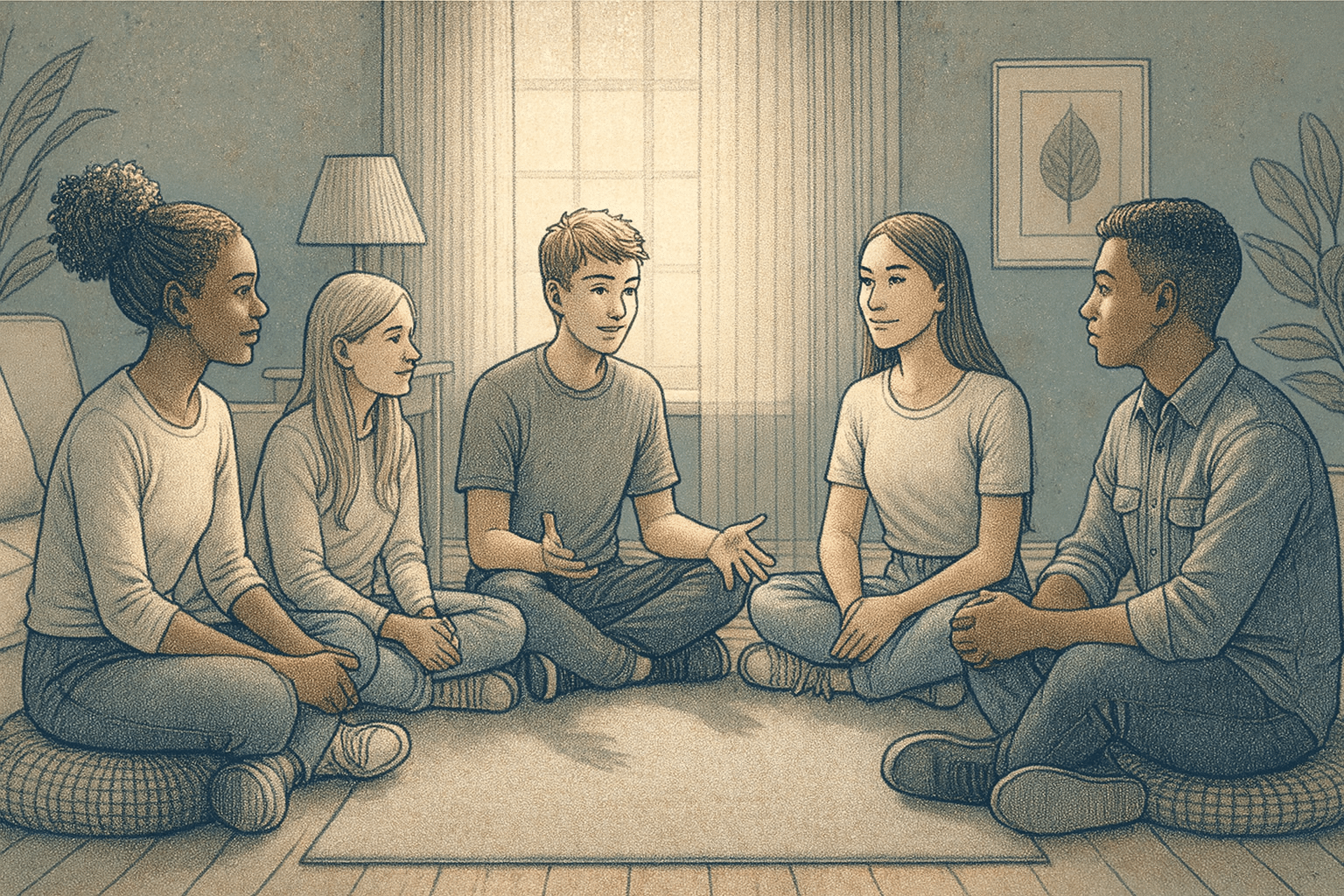
Group therapy helps teens realize they’re not alone while building connections with others who understand their experiences and challenges firsthand.
Complementary Therapeutic Approaches
Art and Creative Therapies
When talking feels too hard, creative therapies open another door to healing. Through drawing, painting, sculpting, or even making music, teens can express experiences that words can’t capture. These methods are especially powerful for those who went through trauma at a young age, before they could fully explain what happened. Creative expression can gently bring buried emotions and memories to the surface in a way that feels safe and manageable.
Mindfulness and Somatic Approaches
Trauma isn’t just in the mind; it’s in the body, too. Mindfulness helps teens notice their thoughts and feelings without getting swept away by them, building a calmer, more grounded awareness. Somatic practices like yoga therapy or gentle movement guide teens back into a positive relationship with their bodies, which can be life-changing after trauma. These approaches work to release stored tension and rebuild trust in the body’s ability to feel safe again.
When Medication May Be Considered
While therapy remains the primary treatment for teen PTSD, medication is sometimes considered as a supportive tool, particularly when symptoms are severe enough to interfere with daily functioning or engagement in therapy. This decision always involves careful consideration of benefits, risks, and the teen’s individual circumstances, made collaboratively with families and medical professionals.
How Parents Can Support Their Teen’s PTSD Recovery
Creating a Safe and Predictable Environment
For teens with PTSD, safety starts with consistency. Keeping routines steady, being mindful of triggers in the home, and giving them a private space to retreat when needed can make a big difference. Emotional safety matters just as much; avoiding judgment or pressure to “move on” while still maintaining healthy boundaries shows them they’re supported and understood.
Understanding Triggers and Responses
Knowing what sets off your teen’s distress, whether it’s certain sounds, smells, or situations, helps you offer support without feeding avoidance habits. Working together on coping strategies gives them more control. It’s also important to notice your own reactions, since feelings like frustration or helplessness can unintentionally affect their progress. Caring for your own emotional well-being helps you stay steady and present for them.
Mission Prep’s Approach to Teen PTSD Treatment
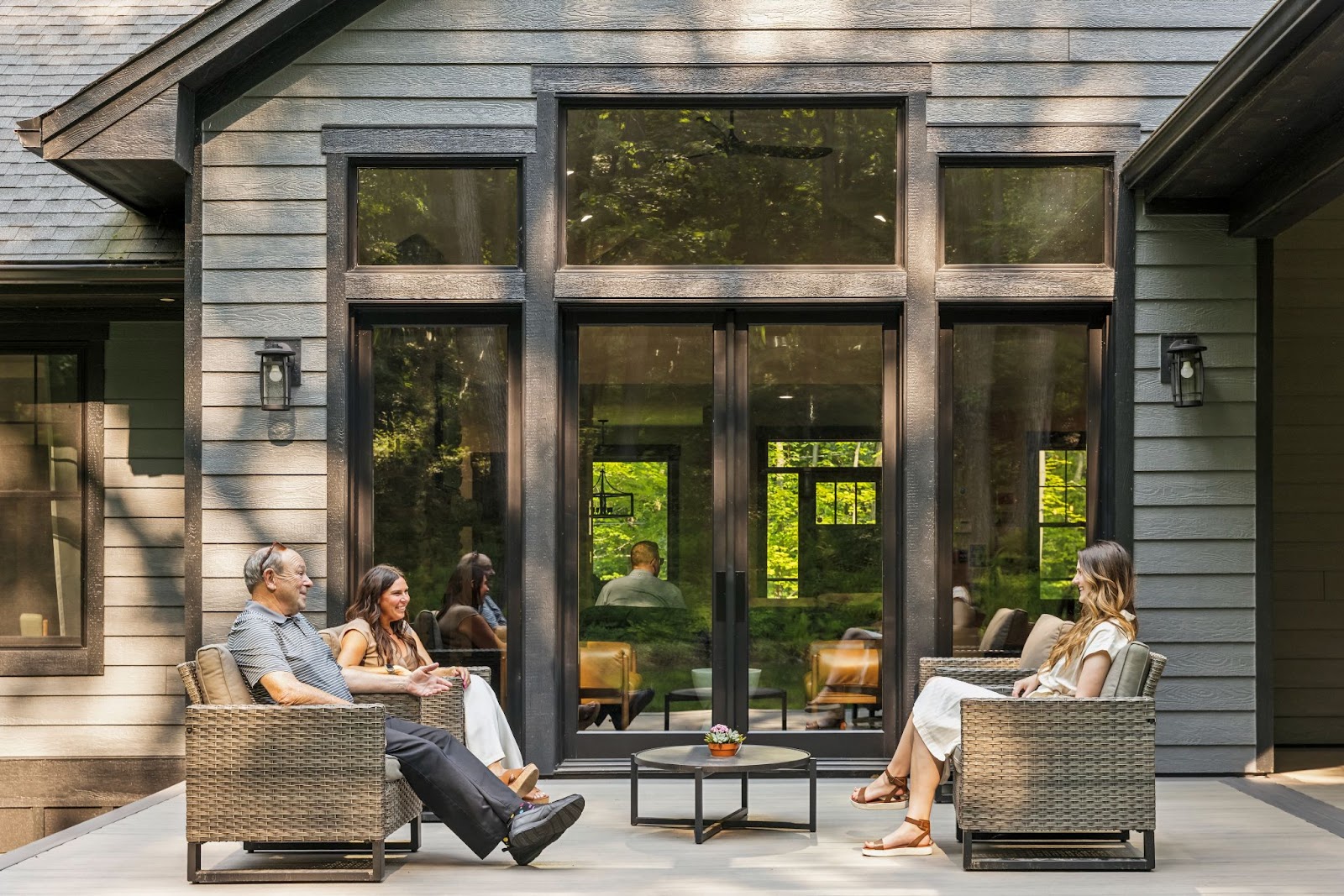
Mission Prep’s trauma-informed approach recognizes that healing happens best in environments that prioritize safety, connection, and empowerment throughout the entire treatment process.
Helping teenagers work through PTSD takes special skills and a real understanding of what they’re going through as they grow. At Mission Prep, we know teen trauma comes with its own challenges, so we use age-appropriate, evidence-based care in a safe and supportive space.
Our comprehensive approach combines individual therapy, family work, and group support through residential, outpatient, and telehealth programs designed specifically for teens aged 12–17. We utilize proven treatments like CBT and EMDR while incorporating creative and somatic approaches that resonate with adolescent clients.
What sets our program apart is our commitment to treating the whole person, not just symptoms. We understand that PTSD affects every aspect of a teen’s life: school performance, relationships, self-image, and future hopes. Our treatment plans address these interconnected areas while building resilience and coping skills for long-term success.
We also recognize that families are essential partners in recovery. Our family therapy components help loved ones understand trauma’s impact while developing skills to support their teen’s healing journey. We provide education, resources, and ongoing guidance to ensure the entire family system supports lasting recovery.
Our licensed facilities are designed to feel welcoming and homelike rather than clinical, creating the sense of safety that trauma survivors need to engage in healing work. Every aspect of our environment and programming is trauma-informed, meaning we understand how trauma affects development and tailor our approach accordingly.
Frequently Asked Questions (FAQ)
How long does PTSD treatment typically take for teenagers?
Treatment length varies based on trauma complexity, individual factors, and treatment approach. Many teens see significant improvement within 3–6 months with consistent therapy, though complete healing may take longer. Evidence-based therapies like TF-CBT typically span 12–16 sessions, while EMDR may work faster for specific trauma memories.
Can teens recover completely from PTSD, or will it always affect them?
With proper treatment, teens can achieve full recovery from PTSD symptoms and go on to lead healthy, fulfilling lives. The teenage brain’s neuroplasticity often allows for more complete healing than seen in adults. Early intervention and evidence-based treatment significantly improve long-term outcomes.
How can I help my teen engage in trauma therapy if they’re resistant?
Start by validating their feelings and avoiding pressure. Involve them in choosing their therapist when possible, and emphasize that therapy is a place to gain tools and strength, not just talk about painful experiences. Sometimes starting with family therapy or creative approaches feels less threatening than individual trauma-focused work.
What’s the difference between normal stress reactions and PTSD in teens?
Normal stress reactions improve over time and don’t significantly interfere with daily functioning. PTSD symptoms persist for more than a month, cause significant distress, and impact school, relationships, or daily activities. Professional evaluation can help distinguish between normal reactions and clinical concerns.
Does Mission Prep Healthcare treat teens with complex trauma or multiple traumatic experiences?
Yes, Mission Prep specializes in treating adolescents with various trauma presentations, including complex trauma, multiple incidents, and co-occurring mental health concerns. Our comprehensive approach addresses the full spectrum of trauma-related difficulties through individualized, developmentally appropriate treatment plans.


